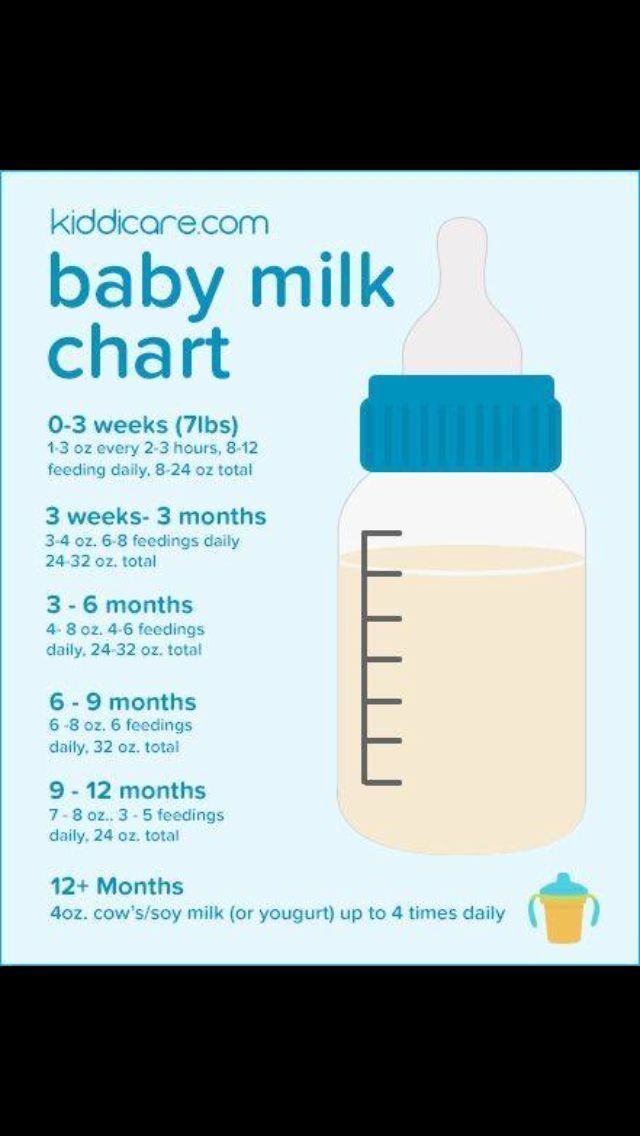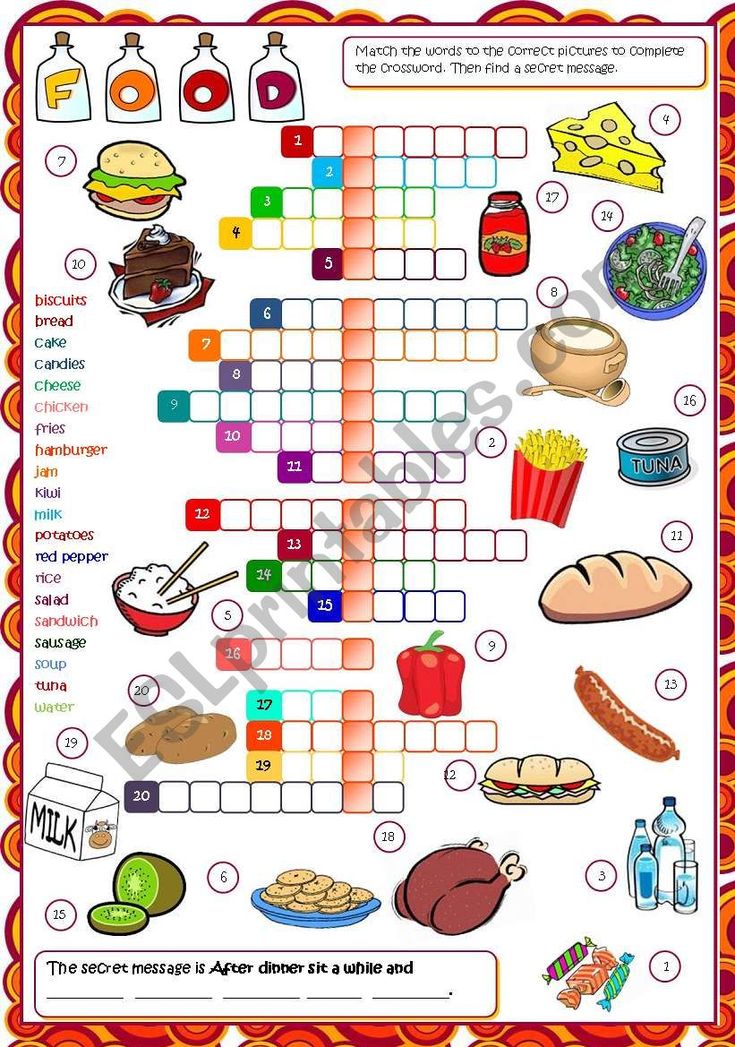7 month old baby feeding every 3 hours
A 7 Month Old Feeding Schedule That Works Like A Charm
What's in this post...
Here is a tried and true (and adapatable) 7 month old feeding schedule that’ll help your little one nap well during the day, sleep well at night, and have peaceful days.
I have long said that the 6 to 12 month time is one of my absolute favorites.
Baby is sitting up.
Smiling.
Napping a tad less.
And usually sleeping through the night.
It can also be a time of adjustment.
Baby is finally eating solids and it’s likely time to drop that third nap and probably drop the dream feed if you haven’t already. Baby is getting a little chunkier and wants more food.
Actually, this is a precious time with baby.
Before the 7 month old feeding schedule… KNOW THIS
Before I give you what has worked for me as a 7 month old feeding schedule, know this.
Babies at this age need to eat as many solids as they can.
They will be hungry and breast milk alone will no longer be enough. Or, if it is, you’ll be cluster feeding like your 7 month old was a newborn.
➡️ Pediatricians used to recommend introducing purees or solids at 4 months of age. They now suggest 6 months.
➡️ So the 5 to 7 month mark generally means that unless baby is getting a lot of breast milk and whatever solids you offer, they will be hungry.
And this will affect their sleeping and their moods.
7 Month Old Sample Feeding Schedule
7:00 am – Wake up, milk, solids for breakfast
8:00 am – Free play (floor time, cuddle time with mom, sibling play)
9:00 am – Nap time
10:45 or 11:00 am – Wake up, milk, solids
12:00 pm – Free play (floor time, practicing sitting, standing, pulling up, sibling play)
1:00 pm – Nap time
3:00 pm – Wake up, milk, solids
3:45 pm – Free play (errands, play with siblings, floor time, etc. )
)
5:00 pm – Short nap
5:30 pm – Wake up, milk, solids
6:15 pm – Bedtime routine habits and ideas (bath, singing, cuddling, putting on lotion, lights, curtains, etc.)
7:00 pm – Quick feed (milk), and down to bed (you may want to add cluster feeding here too if it fits)
And… if baby isn’t sleeping through the night yet.
10:00 pm – Dreamfeed
Note:
- Daily baby logs are a great thing to have on hand if you are noticing a lot of changes you can’t make heads or tails of.
- If your baby wakes up earlier or later than this routine, you can simply adjust based on your baby’s wake time. The wake time is actually very important in a baby’s day to day routine.
- If baby wakes early from a nap, yet is content, don’t push up the feeding. Leave it until normal time unless baby is clearly hungry.

- Get down familiar rhythms and routines throughout your day. These cannot be understated for babies. (here is more on family rhythms and routines)
Weaning From Nighttime Feeds
If your baby is still not sleeping through the night, then this is a great time to start helping them do so.
Solids and milk throughout the day will help them to fill their tummies.
And… get in the necessary nutrients that’ll allow them to sleep peacefully throughout the night.
It is actually one of the best times to begin sleep training since baby is naturally a lot less likely to wake if hunger was their primary reason for waking.
Imagine baby needs 10 cups (to make things even) of milk and/or food a day. We know all babies are different, but go with me here.
If you are currently giving your baby 5 cups of milk and 2 cups of food during the day, that leaves a 3 cup deficit.
This means baby will likely wake up at night to get in the full 10 cups he needs.
The best way to wean?
To give them all they need during the day so they don’t need to wake for it at night.
Watch this short video to learn why babies at this age can get quite whiny and what you can do to avoid this.
A Dream Feed Might Work For You
If your baby is still feeding a few times per night then you may want to start doing something called a Dream Feed.
Now, we don’t typically add IN a night feed at this age, we are trying to eliminate them, but it may help you get a few more hours in.
Dream Feed: A feed given between 10 and 11 ish at night that should help baby sleep a longer stretch, eventually until the morning wake time.
Try feeding baby as much as possible during this feed and weaning baby from other nighttime feeds until eventually the dream feed is the only feed left.
After baby has slept until the morning with only the dream feed for a few weeks, then it’s safe to drop the dream feed.
At that point, baby should be sleeping all through the night.
7 Month Old Schedule Interesting Tidbits
Here are some interesting things to note or keep in mind during this 7 month period.
- Babies will likely be able to sleep through the night at this age if they’re eating well enough. Not only are they getting breast milk they are getting solids.
- Here’s where you’ll discover if your baby didn’t sleep through the night out of hunger, or if they have some sleep props you need to work on.
- Baby might act uninterested in solids, that’s fine. Still, continue offering them and be sure to give them veggies or fruits they like so they will get the nutrients needed.
- Introduce solids slowly so you can monitor the baby’s reaction to them. Don’t introduce too many new foods at once.
- Give a top up bedtime snack.
 Right before bed, give baby milk and some yogurt or applesauce, etc. to help fill baby’s tummy before they go down for the night.
Right before bed, give baby milk and some yogurt or applesauce, etc. to help fill baby’s tummy before they go down for the night.
7 Month Old Schedule Printable
Print his, tweak to fit your family, and feel more confident and in control of your days.
Want Printables to hang up?
If you want routines and schedules for not only the 6 to 9 month age, but for the 12 month, 18 month, and on I’ve got great news. I’ve created a book chock full of routines that work.
Routines that keep babies well rested, happy, and content. Routines that account for all the things you need to do and they are mom tested. The best part?
The book comes with printable routines (3 choices for each age) that you can hang up and use!
So instead of having to reinvent the wheel every few months, you’ll have tried and true mom tested routines right at your fingertips.
Rhythms, Routines, & Schedules Pack
Easy to implement routines, rhythms and schedules from birth through school-aged kids to help you streamline day-to-day life with kids, including a step-by-step guide for getting started.
Learn More
FAQs about 7 month olds
What time should a 7 month old go to bed?
7-month-olds should go to bed by 8 p.m. at the latest, and on average go to bed around 7:00 p.m.
If your baby is still taking a late afternoon or early evening cat nap, this will be easy to manage. Contrary to what you might think, the earlier a baby goes to bed the better they sleep all night.
What should my 7 month old wear to bed?
By 7 months of age babies should no longer be swaddled to sleep. Since they can roll over and move, you want them to be able to do so.
However, you don’t want them to attempting crawling out of the crib, so appropriate to the season layers are good, plus a sleeping bag on top to keep their legs in!
Is my 7 month old hungry at night?
7 months of age can bring about some sleep regressions. One main cause of this is that 7-month-olds are hungry and in need of ample solids to keep their tummies filled.
If they aren’t yet eating enough solids or don’t have enough appropriate protein in their diet, they’ll be genuinely hungry at night. They will need more milk feeds to get them through. Answer? Feed more during the day!
Can you let a 7 month old cry it out?
Cry it out is a form of sleep training that quickly helps. Babies learn to self-soothe, settle, and re-settle on their own. It is age appropriate by 7 months if you choose to use it.
Sources:
- The importance of schedules and routines
- Routines minimize chaos which promotes resilience and regulation
- Routines indicators of predictable family life contributing to childhood development
Family Routines Reboot
Take our 3 day challenge to create life-giving family, child, and self-care routines.
Learn More
::
Night Wakings: Hunger or Comfort?
Skip to content
**I want to start this post with a DISCLAIMER: You should always talk to your pediatrician regarding your child's night feedings. If you are unsure if your child still needs a night feeding, always discuss this concern with your pediatrician. None of the following information should be taken as medical advice. **
If you are unsure if your child still needs a night feeding, always discuss this concern with your pediatrician. None of the following information should be taken as medical advice. **
Most parents survive the newborn phase fairly easily, with all its sleeplessness and on-demand feedings. (Don't get me wrong, it's still rough but we expect that with a newborn!) But after 6-12 months of interrupted sleep it can really start to wear on you!
This is the time that I hear from a lot of parents because they don't feel like they can continue functioning at their current level of sleep deprivation much longer. One of the most common questions that comes my way is:
How do I know if my baby still needs a feeding overnight?
First, let's talk about generalities. By around 6 months of age, many healthy babies will be able to go all night without a feed.
This is true for a couple of different reasons (introduction of solids during the day and increased efficiency during daytime feeds) but what it comes down to is that your baby is now capable of consuming all his necessary calories during his waking hours.
Of course, if we are making generalizations, your baby may not fall within this 'normal' range and that's OK. I am not advising every parent of a 6 month old to stop feeding them overnight regardless of their unique situation.
That is a very personal decision, and it needs to be one that Mom, Dad, and their pediatrician make, not me. However, if you are wondering if your 7 month old is capable of going all night without a feed, the answer is most likely yes.
So if my 7 month old is capable of getting all his calories in during the day, why is he still waking every 3 hours at night to feed?
Great question! The answer: It is a habit or a comfort. Here are 3 different scenarios of what might be occurring:
A.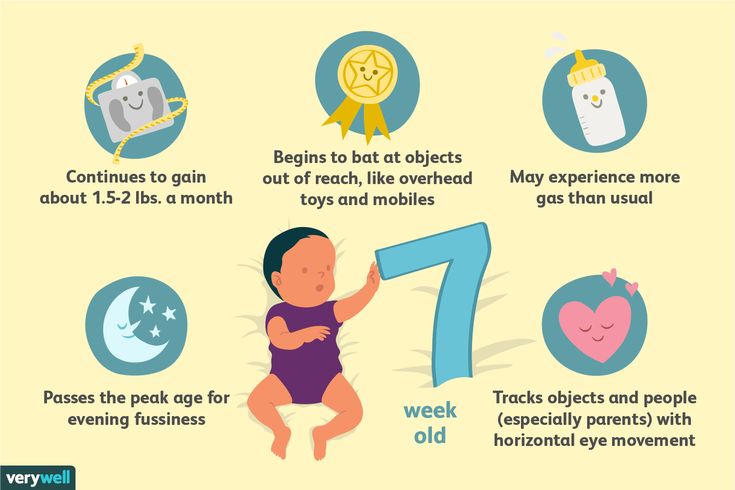 Your baby is only able to fall asleep with the help of a feeding and therefore if he wakes briefly overnight (which all babies do), he needs another feeding to fall back asleep. Check out my blog about sleep associations here.
Your baby is only able to fall asleep with the help of a feeding and therefore if he wakes briefly overnight (which all babies do), he needs another feeding to fall back asleep. Check out my blog about sleep associations here.
B. Maybe your baby already knows how to fall asleep independently. If so, this means this feeding is probably a habit. Your baby may wake at almost the same exact time each night because his body is now programmed to expect that feeding. His body does not need it, but he still feels hungry.
C. Your baby is legitimately hungry because they have been taking in lots of overnight calories for a while now. Because of their bulk of overnight calories, they are distracted and uninterested in eating during the day. This creates a vicious cycle that makes them feel hungry at night when they should be sleeping.
Still unsure whether your baby is eating out of COMFORT or HUNGER?
Your baby may be feeding out of COMFORT if:
-He continues to cry or needs more comforting when laid down awake after a feeding
-He wants to feed every couple of hours
-He has to be asleep (from feeding) when laid back down
-He only feeds a little and then falls right to sleep
-For nursing moms, you can tell he's only pacifying and rarely swallowing. Sucks may feel quick and fluttery
Sucks may feel quick and fluttery
Your baby may be feeding out of HUNGER if:
-He falls back asleep on his own after feeding
-He wants to feed after a long stretch of sleep
-He feeds a large amount
-For nursing moms, you can tell he's actively eating and swallowing the whole time
Ready to tackle your baby's
night wakings?
Check out the Everything Page
for my free and paid offerings!
So How Do I Stop My Baby From Unnecessary Night Feedings?
⇒First, you need a sleep coaching method in place. You will need to use this each time you lay your baby down (bedtime, and any overnight wakings).
⇒Second, you need to choose a way to cut back or remove the unnecessary feedings. Gradual weaning, delayed approach or a cold turkey.
If using a gradual weaning approach, you will work on decreasing the amount of time you nurse or the number of ounces you feed your baby each night. This is a good approach if your child is taking in lots of calories overnight currently.
If you use the delayed approach, you will wait a period of time (10, 15, or 20 minutes) before responding to any night wakings with a feeding. This is a good approach if you know your child is pacifying more overnight instead of eating and if the wakings are very frequent.
If using a cold turkey approach, you will simply not be responding to any night wakings with a feeding. This can be a good approach to use if your child has multiple feedings but really only needs 1 overnight. Or if your child is especially stubborn and you know you need to be more clear and consistent with removing the feed.
Need more help navigating this process? Feel free to reach out and we can talk through my Sleep Courses or work 1:1 together to resolve your baby's night wakings!
Posted in Night feedings, Night wakings, Night weaning, Regressions, Sleep Props, Sleep Tips.
Carianna ~ Pediatric Sleep Coach
Hi! I'm a well-rested mom of two elementary-aged boys and I'm sharing my tips and methods so you can ditch the overwhelm and start getting the sleep that your family needs to thrive.

Search For Sleep Tips
Search for:Breastfeeding on demand
You can often hear from a nursing mother: "I feed on demand, my baby requires a breast every 3.5 hours." Or: “I have always fed on demand. In a year, we already had 1 feeding in the evening, and my child calmly refused to breastfeed. Before talking about the demand of the child, it is necessary to find out what modern women mean when they say - "I breastfeed."
Modern mothers consider breastfeeding necessary for feeding their baby. Just for feeding. Breast milk is food, the mother supplies the baby with the nutrients necessary for growth and development. When a baby suckles at the breast, he eats. Breastfeeding makes sense only as a process of supplying proteins, fats, carbohydrates, vitamins and microelements. nine0004
During suckling, the baby receives the nutrients it needs with mother's milk. This is the absolute truth. There is another unconditional truth, which is not given any importance in modern society, it is not taken into account and is not considered. Breastfeeding for a child is communication with the mother. We need to figure out how the child understands feeding on demand? Can he understand anything at all? Is there any difference for him how he is fed, for 15-20 minutes after 3.5 hours or in some other way? nine0004
Breastfeeding for a child is communication with the mother. We need to figure out how the child understands feeding on demand? Can he understand anything at all? Is there any difference for him how he is fed, for 15-20 minutes after 3.5 hours or in some other way? nine0004
What is on-demand feeding
On-demand feeding of a newborn baby means putting it to the breast for every squeak or search. Squeak and search movements in newborns, even as early as the second or third day of life, begin to appear much more often than after 3.5 or 2.5 hours. The need for attachments increases rapidly, and by the 10-12th day of life, the need to attach to a child may occur 15-16 or more times a day. Applications vary in duration. The baby can fall asleep and sleep while sucking for, for example, 1.5-2 hours. Can release the breast after 1-2 minutes. And then ask her again. Why does a child need such frequent contact with his mother's breast? nine0004
That's why. Being in the mother's belly, in a calm, familiar environment, listening to the noises of the mother's body, being in a warm, cramped, confined space, the baby sucked his fist, fingers, loops of the umbilical cord, swallowed amniotic fluid.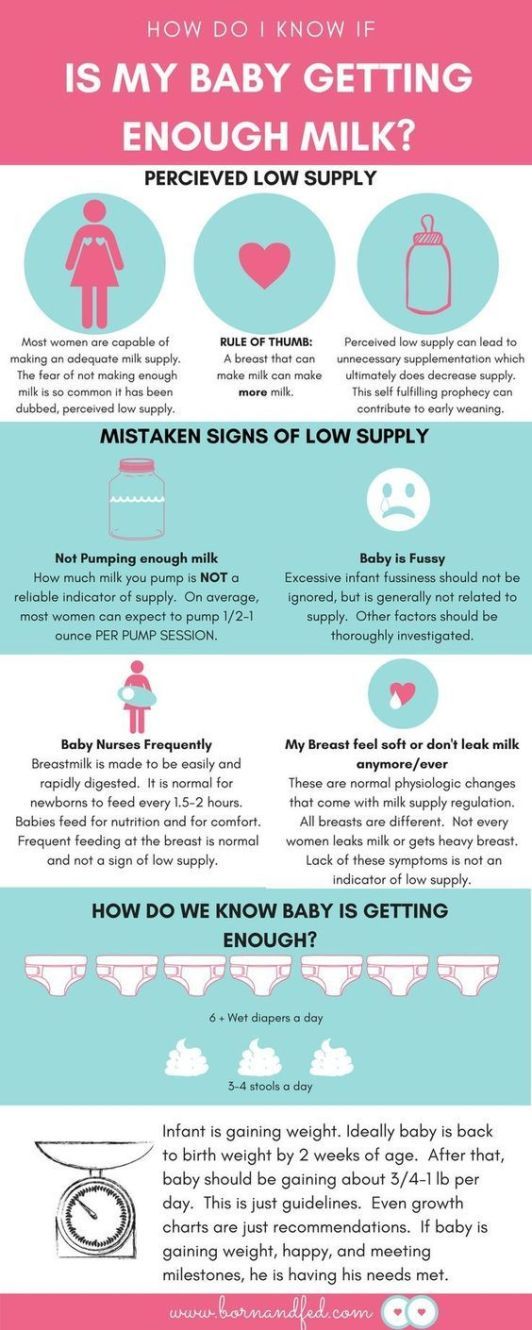 Learned to suck and swallow. After birth, experiencing discomfort for any, the most insignificant reason, the baby tries to get rid of it. You can get rid of discomfort by getting into the usual conditions of a comfortable stay. The only place where the baby after birth can feel the sensations familiar to him is in the arms of the mother. The only familiar action is sucking. The only familiar taste and smell is the taste and smell of milk and lube in the areola. Milk and lubricant have an odor and taste similar to the taste and smell of amniotic fluid. Therefore, experiencing discomfort, the baby squeaks, or begins to look for an object to suck with his mouth. Ideally, it is immediately applied to the chest. The baby becomes warm, cramped, he hears the beating of his mother's heart, breathing, grumbling in the intestines, he sucks and feels the familiar taste and smell. If such an action happens constantly, the baby gains confidence, no matter what happens, he will solve all his problems with his mother.
Learned to suck and swallow. After birth, experiencing discomfort for any, the most insignificant reason, the baby tries to get rid of it. You can get rid of discomfort by getting into the usual conditions of a comfortable stay. The only place where the baby after birth can feel the sensations familiar to him is in the arms of the mother. The only familiar action is sucking. The only familiar taste and smell is the taste and smell of milk and lube in the areola. Milk and lubricant have an odor and taste similar to the taste and smell of amniotic fluid. Therefore, experiencing discomfort, the baby squeaks, or begins to look for an object to suck with his mouth. Ideally, it is immediately applied to the chest. The baby becomes warm, cramped, he hears the beating of his mother's heart, breathing, grumbling in the intestines, he sucks and feels the familiar taste and smell. If such an action happens constantly, the baby gains confidence, no matter what happens, he will solve all his problems with his mother.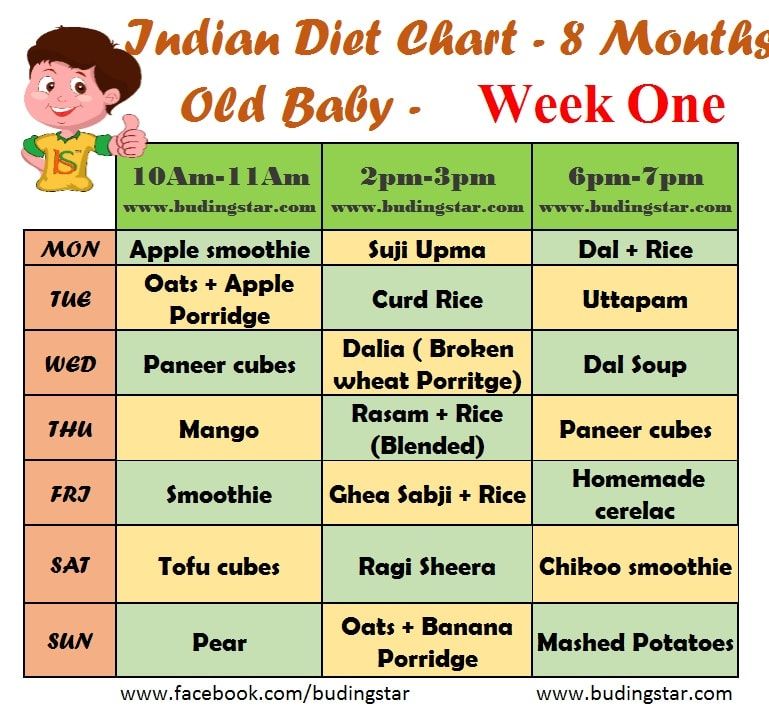 The place of comfort is now under the breast, and you can suck on the breast. nine0004
The place of comfort is now under the breast, and you can suck on the breast. nine0004
This whole process is biologically justified. A newborn child does not feel the feeling of hunger, this feeling is not formed in him. It will begin to form at about two months of age. How to feed a creature that does not experience hunger ?! How to encourage him to take some action to get food? This can be done only at the expense of some other incentives. This stimulus for the newborn is constant bodily discomfort, thanks to which he wants to suckle all the time! The most intense, frequent and prolonged sucking in infants is observed in the first two or three months of life. It is in these first months that the main weight gain of the baby occurs. nine0004
Feeding in the first month
Baby falls asleep with breast in mouth, sleeps sucking for a while. Falling asleep deeply, lets go of the chest. After sleeping for a while, he wakes up, and is applied on waking. After sleep, he can stay awake for some time, for example, an hour and a half. During wakefulness, he may feel discomfort 2-3 times, for example, from a completely natural desire to pee, and having called his mother for help, having kissed for a couple of minutes, he will do his deeds. Then he will want to sleep, feel discomfort and, kissing his chest, will again fall asleep sucking. After some time, he will wake up and attach again. Then again a little "walk". And after some time, he will fall asleep at the chest again. nine0004
During wakefulness, he may feel discomfort 2-3 times, for example, from a completely natural desire to pee, and having called his mother for help, having kissed for a couple of minutes, he will do his deeds. Then he will want to sleep, feel discomfort and, kissing his chest, will again fall asleep sucking. After some time, he will wake up and attach again. Then again a little "walk". And after some time, he will fall asleep at the chest again. nine0004
The daytime naps of a one-month-old infant feeding on demand vary in duration and number. There can be 4-6 dreams during the day, and they can last from 5-15 minutes to 2-2.5 sometimes 3 hours. "Around" each dream, the baby is applied to the chest, and applied between dreams several times. At night, the child falls asleep at the breast. Usually in the early morning hours, he begins to fuss and apply. In the morning, he almost never fully wakes up. The baby sleeps, from time to time, sucking on his mother's breast. Waking up in the morning, the baby is again applied to the chest.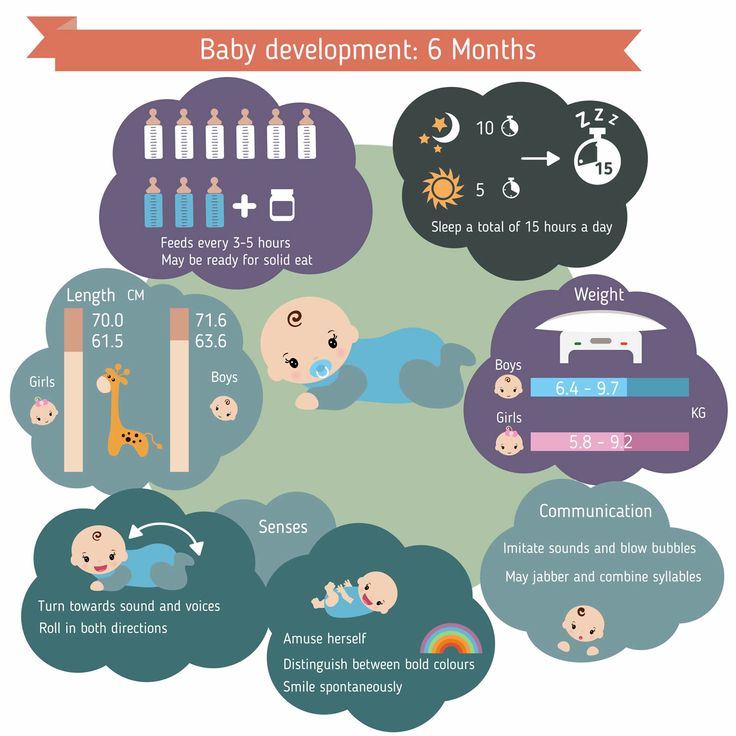 If you count all the attachments that have happened in a baby of one month of age, then approximately 16-20 attachments are obtained. This is how a newborn human cub behaves if it is given the opportunity to behave in accordance with physiological and psychological needs, which, by the way, are genetically determined. The child of the first months of life does not separate his personality from the personality of the mother and from her breast. Mom and her breasts, and everything connected with them, are the universe of the baby and himself. nine0004
If you count all the attachments that have happened in a baby of one month of age, then approximately 16-20 attachments are obtained. This is how a newborn human cub behaves if it is given the opportunity to behave in accordance with physiological and psychological needs, which, by the way, are genetically determined. The child of the first months of life does not separate his personality from the personality of the mother and from her breast. Mom and her breasts, and everything connected with them, are the universe of the baby and himself. nine0004
In most cases, a modern woman, being afraid to “accustom a child to hands”, strives to limit his requests for sucking. A pacifier and a bottle of tea or water come to her aid in this matter. They, too, can be sucked ... The need for sucking seems to be satisfied. But only the need for communication with the mother during suckling is not satisfied, the peculiar chain of mutual assistance and cooperation between mother and baby is destroyed, the formation of maternal affection and concentration is disrupted. Is the difference in the two actions noticeable to the reader: the baby cried, the mother took him, put him to her chest and started rocking him, or gave him a pacifier and started rocking the stroller, even with the words “Why are you crying, my sun?” nine0004
Is the difference in the two actions noticeable to the reader: the baby cried, the mother took him, put him to her chest and started rocking him, or gave him a pacifier and started rocking the stroller, even with the words “Why are you crying, my sun?” nine0004
The modern woman who gives a pacifier and pumps a stroller is not a bad person deliberately harming an infant. She is simply in captivity of prejudices regarding the relationship between mother and baby. She does not know how to behave correctly, does not know what to do in accordance with the natural needs of the child. If you tell her what the child really needs, she will exclaim in horror: “What is it, don’t let him get away with?!” Indeed, the child of the first months of life must not be let off the hook. For a woman who does not know how to comfortably carry a baby, and who does not know how to feed him in various positions (sitting, lying, standing and even moving), this can be very difficult. Especially if she is not sure of the correctness of her actions. nine0004
nine0004
An action that should become automatic for the mother of a newborn: when the baby cries or shows other signs of anxiety, put the baby to the breast.
What's next?
The baby is growing. A fairly stable rhythm of daytime sleep begins to form in him, and a 3-4-month-old baby behaves quite differently from a newborn. Feeding on demand at this age looks something like this...
- At three months, the baby has 10-12 feeds during the day and 2-4 at night. There are frequent applications for a short time, but their number is reduced. There may be a long night break in feedings, about 5 hours, but this is very rare. Much more often the night break is 2.5-3.5 hours. By this age, the baby's body is noticeably rounded. nine0036
- At four months, the baby begins to breastfeed noticeably less frequently. The main feedings are associated with sleep: the baby suckles before bedtime, during awakening and during sleep, both daytime and nighttime. In this regard, he has a fairly accurate feeding regimen.
 And many babies stop breastfeeding when they wake up after daytime sleep, sometimes as early as 2.5-3 months.
And many babies stop breastfeeding when they wake up after daytime sleep, sometimes as early as 2.5-3 months. - At five months, the baby has 8-10 daytime feedings and 2-3 nighttime, attachments as well as in the fourth month of life, are organized around dreams - the baby eats when going to bed and some babies suck during awakening. nine0036
- At six months, the feeding regimen changes. The most active sucking shifts to the last 2-3 hours before waking up from a night's sleep. The period of daytime wakefulness can be divided into two periods: in the morning, when the baby sucked during the night is rarely applied to the breast, and in the evening, when attachments become very frequent. In total, there can be 7-10 day applications and 3-4 night applications. At this age, the baby begins a period of acquaintance with new food - pedagogical complementary foods. Sometimes there are attachments associated with the introduction of complementary foods, the baby “washes down” samples of new food with mother's milk.
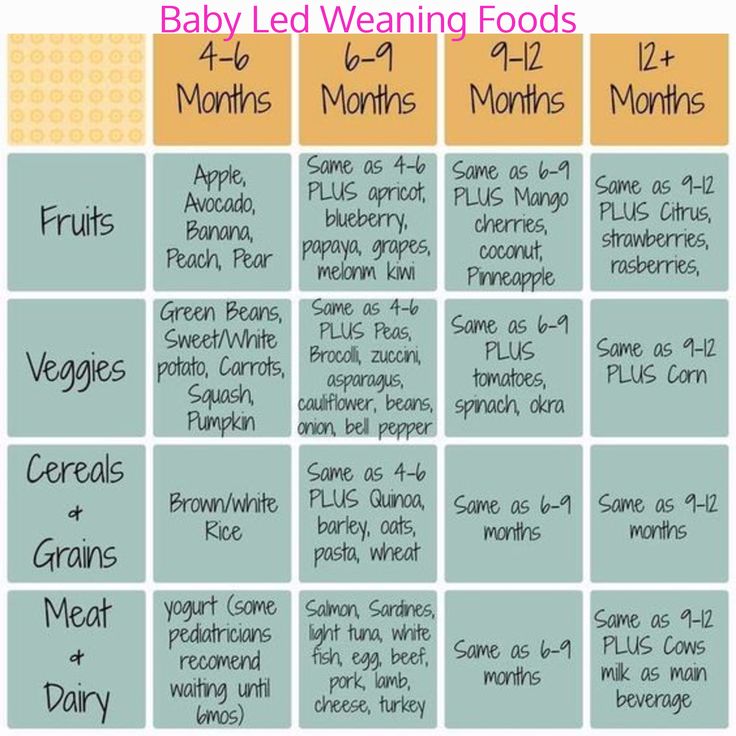 But many children do not want to drink complementary foods. When complementary foods are introduced to an on-demand baby, it is never meant to replace feedings with complementary foods. This is practically impossible, because the main feedings of the baby are associated with sleep, and mother's breakfasts, lunches and dinners, during which the baby gets acquainted with new food, are located between the baby's dreams, during his wakefulness. nine0036
But many children do not want to drink complementary foods. When complementary foods are introduced to an on-demand baby, it is never meant to replace feedings with complementary foods. This is practically impossible, because the main feedings of the baby are associated with sleep, and mother's breakfasts, lunches and dinners, during which the baby gets acquainted with new food, are located between the baby's dreams, during his wakefulness. nine0036 - At seven months, the frequency of application is about the same.
- At eight months, the feeding regimen changes. Since the baby shows high motor activity and is very busy exploring the surrounding space, in the daytime he forgets to breastfeed. In this regard, the number of daily feedings can be reduced to 6-8 times. The baby compensates for the reduction in daytime feedings by increasing the frequency and duration of nighttime feedings up to 6 times. nine0035 In the second half of the year, babies who stopped breastfeeding when waking up after daytime naps recall this habit again.
- Breastfeeding becomes more frequent at nine to ten months. In the daytime, this is 4-6 full feedings and about the same number of attachments for various reasons. The baby has new reasons for attachment. If, during active actions to master the world, the baby fills a bump or gets scared, he calms down with his mother's breast. There may be situations when you can comfort the baby by sitting next to him and hugging him.
At night, 4-6 feedings remain, the baby begins to suckle more actively in the morning between 3 and 8 hours. nine0036
- At eleven months, a baby can already have 2-3 complete complementary foods. Initiation to adult food in the mind of a child is not associated with breastfeeding: attachment to the mother's breast is something other than the desire to get enough of the product they like. As a rule, after the baby has eaten, he feels the need to attach himself to the breast. The number of daily feedings remains the same in the child, but the number of short-term attachments increases. There are active mid-morning feedings between 4 and 8 o'clock in the morning. nine0036
- At ten or twelve months, the baby, if he is already walking, can sometimes breastfeed every time he comes to his mother, i.e. about every 15-30 minutes. Attachments around dreams and night sucking persist. Therefore, if a mother says that a child suckles once or twice a day, this means that there is no feeding at the request of the child.
 There are restrictions imposed by the mother, with which the baby has come to terms. He treats breast sucking like food, sucks on a pacifier or a finger to fall asleep or soothe, or falls asleep just like that, without calming down. nine0036
There are restrictions imposed by the mother, with which the baby has come to terms. He treats breast sucking like food, sucks on a pacifier or a finger to fall asleep or soothe, or falls asleep just like that, without calming down. nine0036 - At twelve months, the baby is applied in about the same way.
- At the age of one and a half years, there may already be one daytime nap, so there are fewer attachments associated with sleep. Preserved for morning sucking. The baby is very free with his mother's breasts. Sometimes it happens that he comes up to suck just for fun. For example, like this: he comes up, climbs on his knees, looks into his mother’s face, smiles, starts to swarm in his shirt, gets breasts, smiles at his breasts, sucks for 30 seconds and leaves. nine0036
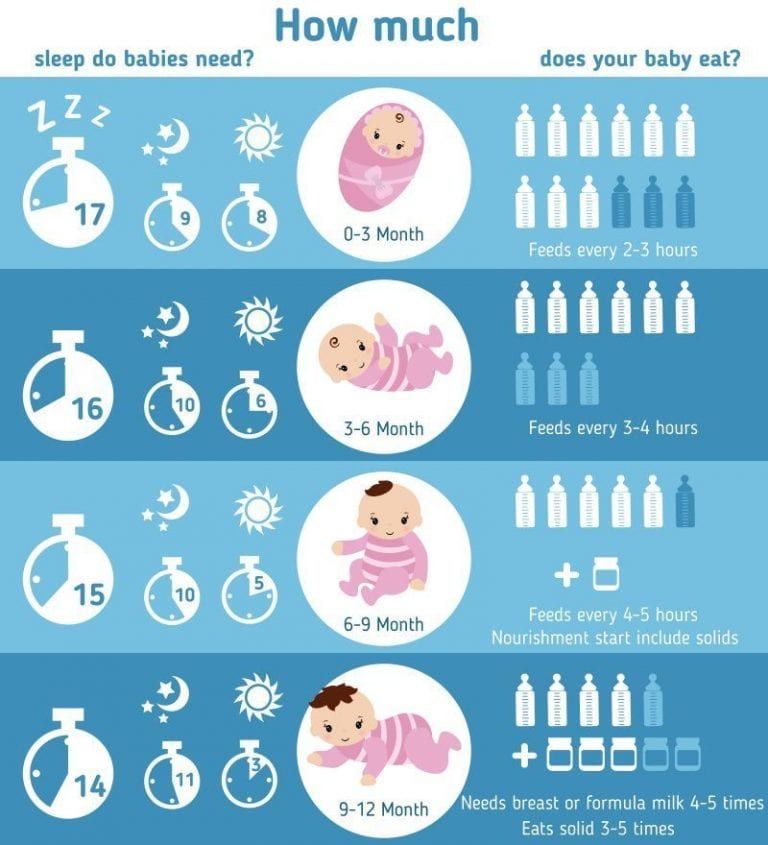 The baby’s daytime sleep in the second half of life, as well as in the region of a year and older, looks something like this: the baby falls asleep sucking, sleeps quietly for a while, for example 1-1.5 hours, then starts tossing and turning, fiddling, worrying, at this moment the mother lies down next to , gives him a breast and the baby can fill up 10-15-30 minutes sucking. Mom may well use this time for her own rest - lie down, read, while the baby sleeps while sucking. I know my mother, a lover of embroidery, who used this time specifically for embroidery ...
The baby’s daytime sleep in the second half of life, as well as in the region of a year and older, looks something like this: the baby falls asleep sucking, sleeps quietly for a while, for example 1-1.5 hours, then starts tossing and turning, fiddling, worrying, at this moment the mother lies down next to , gives him a breast and the baby can fill up 10-15-30 minutes sucking. Mom may well use this time for her own rest - lie down, read, while the baby sleeps while sucking. I know my mother, a lover of embroidery, who used this time specifically for embroidery ... As for the number of feedings per day when feeding a child on demand, their number is almost never less than 12. A newborn has 12 or more attachments, mostly they are all associated with dreams. And a child, say 1.5-2 years old, can also have about 12 attachments, only 3-4 are associated with sleep, and the rest are short-term attachments for various reasons. I suggest to all mothers reading this text - do not count the application, do not notice their duration. Breastfeed your baby as often as he asks, when you feel the need to. nine0004
And a child, say 1.5-2 years old, can also have about 12 attachments, only 3-4 are associated with sleep, and the rest are short-term attachments for various reasons. I suggest to all mothers reading this text - do not count the application, do not notice their duration. Breastfeed your baby as often as he asks, when you feel the need to. nine0004
Moms who don't think about breastfeeding without looking at the clock may get the impression that when breastfeeding on demand, the mother can do nothing but feed the baby. This is not true. After the birth of a baby, a mother begins another life, she is called life with a baby. That's all. The child is with the mother, not the mother with the child! Feel the difference! You need to be able to organize your life in a different way, in the first months, of course, the help of loved ones is very necessary. In the tradition of many peoples, it was customary for the first 40 days after childbirth to remove a woman from any housework and household chores, she was engaged only in a child. In some nations, objects that the mother of a newborn touched were considered “unclean”, therefore, they preferred to protect the mother from the rest of the household, allocating her a separate “corner” of the house, where no one bothered her and she did not interfere with anyone. Among the Slavs, such a restrictive custom was called a six-week. By 1.5-2 months, the rhythm of daytime dreams begins to form, and the baby has a kind of “regime”, the mother becomes more free. nine0004
For a mother who can't imagine breastfeeding without looking back at the clock, and who is sure that the “right” baby is the baby lying quietly in her crib all the time, feeding on demand will be a complete hassle. It will be much easier for such a mother if she stops looking at the clock and ties the baby to herself with a large scarf or uses a patchwork holder (sling). It will become easier for her if she stops running between the nursery and the kitchen, but takes the baby with her to the kitchen and carries him around the house with her, doing housework, in a box, a cradle, a special chair, if she tries not to put him off often, and pick up as soon as possible, postponing the baby only in case of emergency and not for long. nine0004
nine0004
Breastfeeding is not the same as house arrest. In the conditions of modern society, it is possible to organize the exit of a nursing mother to work from about 6 months of age of the baby. If necessary, you can start working from the age of 4 months, but, of course, it is better not every day of the week and not full time. It is the responsibility of a breastfeeding consultant to help a mother organize her return to work.
Sometimes, when I advise mothers on breastfeeding, I suggest that they forget for a second that they are already living in the 21st century. I propose to return, for example, to the cave and ask what they will do if the child woke up at night, how to calm him down? If you are walking through the forest and trying not to attract the attention of predators, how to make the baby silent? If the child is thirsty, what will you give him? What is the baby used to, for thousands of years of its existence? To the fact that he sleeps on his mother while she wanders through the forest with a digging stick in search of roots, and wakes up when mother stops. Since mom stopped, then there is time to wake up and suck. Therefore, even now the child sleeps well, tied to the mother with a patchwork holder, wakes up when the mother, having done a few household chores, sits in a chair to take care of the baby. nine0004
Since mom stopped, then there is time to wake up and suck. Therefore, even now the child sleeps well, tied to the mother with a patchwork holder, wakes up when the mother, having done a few household chores, sits in a chair to take care of the baby. nine0004
Some mother, reading about the cave, will be offended, saying that she is a civilized creature. But please think. Man, mother's breast and mother's milk have been created by evolution over millions of years. They are made for each other. Baby food has created progress and more recently. The skills of motherhood and breastfeeding have also been lost by our society quite recently. A person is not physiologically adapted to artificial feeding and a pacifier. The mother's breast will not produce enough milk at 6-7 feedings per day. Nature did not know, when creating man as a mammal, that the time would come when the need for breastfeeding would be satisfied by some kind of pacifiers and nipples. nine0004
Changes that occur during the formation of the personality of a child who did not have full contact with the mother during prolonged breastfeeding are noted by modern research by psychologists and sociologists. These are changes with a minus sign. It would be better if they were not, these changes.
These are changes with a minus sign. It would be better if they were not, these changes.
Breastfeeding is important not only for the baby, it is also important for the mother. During on-demand feeding, the woman's feelings change, a stronger attachment to the baby is formed, the woman becomes more sensitive to the needs of the baby. Deeper affection and understanding are not only preserved in infancy. They persist for life. For clarity, imagine what happens to a woman’s feelings if she tries to “withstand” a child, endures his crying, anxiety. What happens to a woman if she uses the recommendation from one very popular parenting book: "Go to the child if he cries for more than 15 minutes"? Speaking in abstract terms, humanity is interested in reviving the practice of breastfeeding. The revival of this practice is impossible without mothers realizing the true reasons for the child's need for attachment to the breast. nine0076
Lilia Kazakova, pediatrician,
Head of Breastfeeding and Child Care Counselors
Seven Months Menu
0-6 Months
Article
5/5 1 reviews
What should be the menu of a child at 7 months? What foods and in what quantity can be introduced into the diet at this age? When and at what intervals to give the baby to eat? We will help develop an approximate menu for a 7-month-old baby and answer the most exciting questions regarding the nutrition of a baby up to a year old. nine0004
7 min. for reading Feb. 17, 2022
Contents
- Diet: when and how much should a child eat at 7 months
- Baby's menu at 7 months: introducing new products
- Consistency of dishes
- Meal schedule and approximate daily menu
- Sample diet for a 7 month old baby allergic to cow's milk proteins: Table
- Popular questions
- Breastfeed your baby every 3-4 hours while breastfeeding.
- If you give your baby expressed breast milk, he needs approximately 710 grams per day. With 5-6 meals a day, this is about 120 to 200 grams of milk per meal.
- If the baby is formula-fed (FW), he needs 170 to 230 grams of formula up to 4 times a day, provided that 2 more feedings replace complementary foods. To find out how much mixture you need, be guided by the instructions on the package, the recommendations of the pediatrician.
 nine0036
nine0036 - From the age of 6 months, only mother's milk or adapted infant formula is not enough for a baby - he needs a variety of complementary foods. Introduce no more than one new product per day into the child’s menu at 7 months and consult a pediatrician first. After getting acquainted with different foods, up to three complementary foods can be given daily: this can be one or two tablespoons or 115-170 grams (8-12 tablespoons), depending on the baby and the specific product.
Important
The calculation of portions and the number of feedings depends on the individual characteristics of the development and needs of the child. Therefore, first of all, be guided by the recommendations of your pediatrician and the needs of the baby.
Baby menu at 7 months: introducing new products
The basis of the diet is still breast milk or infant formula. To diversify the menu, children's adapted food will help: fruit and vegetable purees, milk and dairy-free cereals, juices, as well as some products from the "adult table". nine0004
Cereals
At 7 months, dairy-free and milk porridges, along with breast milk, are the basis of a child's nutrition. To start complementary foods, choose gluten-free liquid one-component cereals with a high iron content: rice, buckwheat, oatmeal. A little later - corn and semolina. Start complementary foods with half or a whole teaspoon, gradually increasing the serving to 150 grams.
Important
Dairy-free porridge is diluted with breast milk or milk formula, milk - with purified boiled water. nine0123
Find out more: Gerber® Baby Cereals: product range
Vegetable and fruit purees
Vegetable and fruit purees diversify the diet and introduce new tastes to the baby. According to WHO recommendations, the best product to start with is a one-component vegetable puree made from zucchini, broccoli, cauliflower or potatoes. These vegetables are less allergenic than other foods. If the child does not have allergies, pumpkin, carrot, pea and tomato puree can be given a little later. nine0004
Find out more: Gerber® Vegetable Purees
After introducing vegetable purees into your diet, it's time for your baby to get to know sweet and healthy fruit purees. Like vegetable, fruit complementary foods are also recommended to start with one-component low-allergenic foods. Apple, pear or banana puree is best for this. Start with half or a whole teaspoon and gradually increase the serving to 100-150 grams.
Find out more: Gerber® fruit purees
Meat
Meat is a developmentally necessary product rich in iron and protein, which is well absorbed in the body. Start with homogenized options. The product must contain only one type of meat (diet turkey, rabbit, chicken, veal) and no additional components. If the crumbs have a tendency to food allergies, choose meat very carefully, it is better to consult a doctor in advance. Pay attention to the composition of baby food and its age-appropriate baby. First, let the baby try half a teaspoon. If no adverse reactions occur, gradually increase the meat rate to 60 grams. nine0004
Pay attention to the composition of baby food and its age-appropriate baby. First, let the baby try half a teaspoon. If no adverse reactions occur, gradually increase the meat rate to 60 grams. nine0004
Learn more: Gerber® Meat Purees
Juices
Fruit Juice is great for snacking and menu variety. Young children tolerate clarified apple and pear juice better, so they should be introduced first. Give the baby adapted baby juices: they do not contain sugar or other additives undesirable for the child. Ordinary store-bought juices can only be drunk by children over three years old.
0122
Tip
Introduce your baby to juices after introducing cereals and vegetable purees. Often the child gets used to sweet juices and then does not eat foods with a less bright taste.
Egg yolk
In addition to cereals and mashed potatoes, boiled egg yolk is introduced at 7 months of age, as it is an excellent source of omega-fats, selenium, phosphorus and vitamins.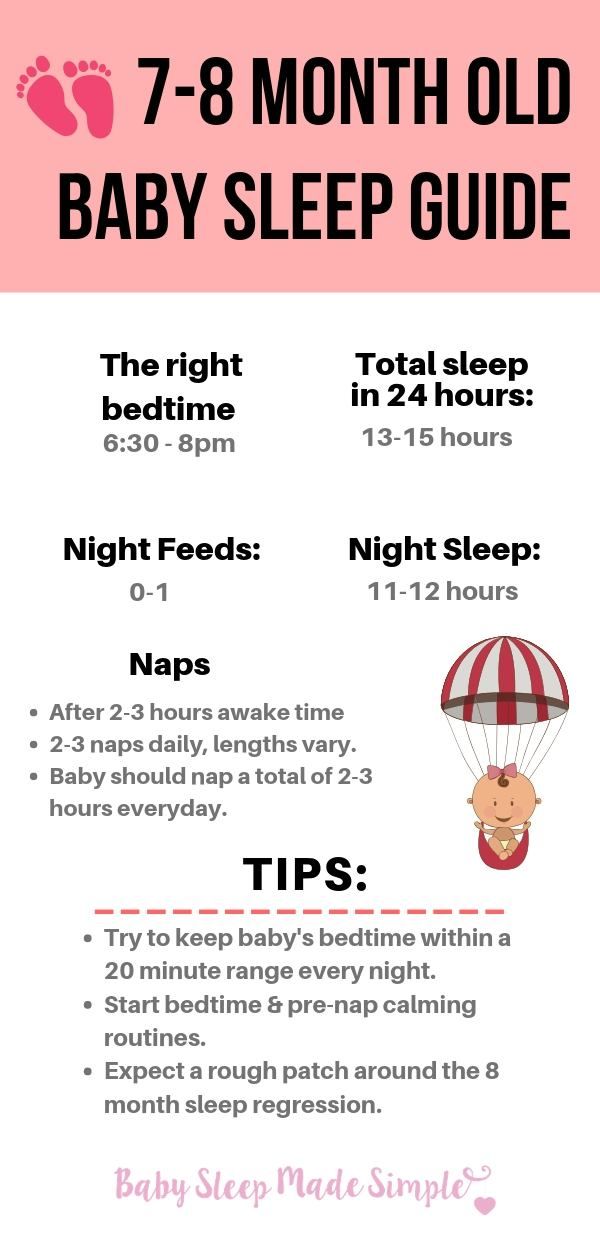 Please note that you need to give the egg not the whole, but only the yolk. But, like any other product that you give to try for the first time, it should be introduced carefully and little by little to make sure that the baby does not have an allergy. Do not combine with other food! Only when you "test" the yolk, it is allowed to add it to cereals and vegetable purees. nine0004
Please note that you need to give the egg not the whole, but only the yolk. But, like any other product that you give to try for the first time, it should be introduced carefully and little by little to make sure that the baby does not have an allergy. Do not combine with other food! Only when you "test" the yolk, it is allowed to add it to cereals and vegetable purees. nine0004
Important
It is believed that children with allergies can be fed quail eggs. But it is important to remember that quail eggs can also be allergic, as they also contain egg white - an allergen that is found in chicken eggs. Therefore, do not experiment, but seek the advice of a pediatrician.
See also: Introduction of complementary foods to children with food allergies
Baby biscuits and croutons0136
At seven months, some babies begin to erupt their first teeth. Therefore, you can add crackers and children's cookies to food.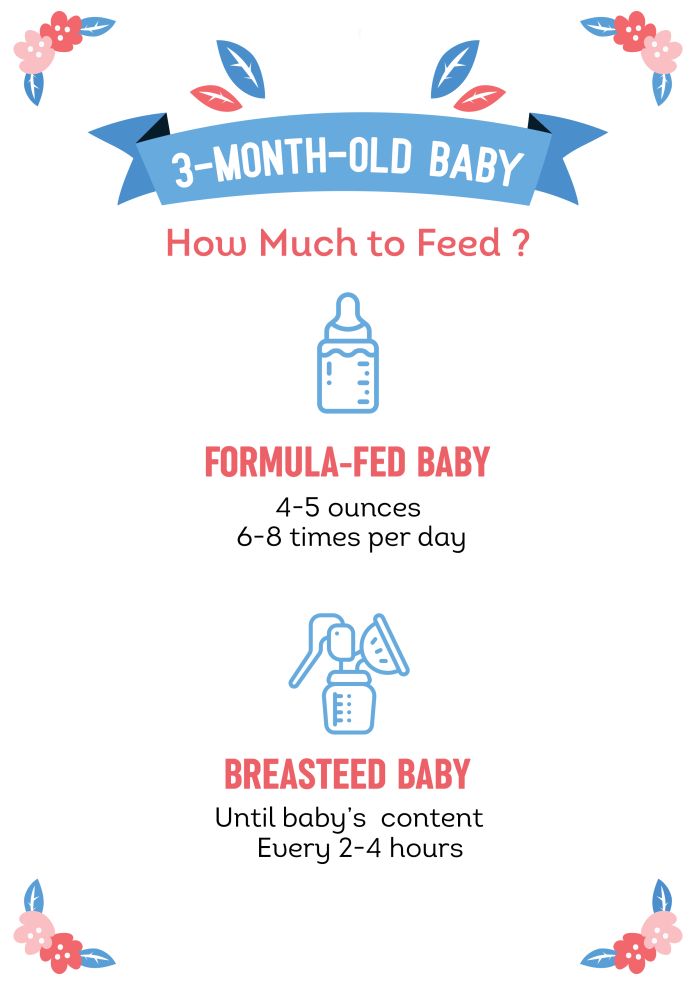 But do not forget that they should not be too hard so that the child does not get hurt and choke. It is also better to choose special products without added salt, sugar, synthetic leavening agents and preservatives.
But do not forget that they should not be too hard so that the child does not get hurt and choke. It is also better to choose special products without added salt, sugar, synthetic leavening agents and preservatives.
Important
The child should eat solid food in a sitting position and strictly under adult supervision. nine0123
Consistency of dishes
The main component of the diet remains liquid and homogeneous (without lumps) - breast milk or milk formula, milk and dairy-free cereals. As the baby grows, the baby's food should change from liquid and homogeneous to thicker and puree, mashed. When the body adapts and is able to digest solid food, they begin to carefully introduce small, medium and coarsely ground foods, give children's cookies and crackers. At 7 months, some babies already have teeth, but the child cannot yet chew thoroughly and safely swallow vegetables, fruits and meat. Therefore, solid food should be given only in a grated form. It is important that the puree is not too thick, otherwise the child may accidentally choke. nine0004
It is important that the puree is not too thick, otherwise the child may accidentally choke. nine0004
Advice
If you are making puree yourself, carefully remove everything that is not rubbed and can get into the crumbs' respiratory tract: bones, fat, veins, skin, films. To make the puree easier to swallow, add some boiled water, unsalted vegetable broth, vegetable puree already familiar to the baby, or breast milk (milk mixture).
By about 7 months of age, your baby has mastered the “palm grip” skill and can independently hold solid food in the handle. From now on, you can give your child special baby cookies or snacks. At the same time, make sure that the baby eats slowly, in a sitting position and does not choke. nine0004
Important
Your baby should be ready for more sticky or solid foods. Therefore, before changing the consistency of food for a child, consult a pediatrician.
What can be given to children at 7 months and at what time to feed? Parents can begin to form a classic division of food consumption per day. But at 7 months, the baby needs to be fed not three or four, but five times a day at intervals of four hours. The first and final feeding is mother's milk or formula. Complementary foods are not given at this time in order to prevent overeating. nine0004
But at 7 months, the baby needs to be fed not three or four, but five times a day at intervals of four hours. The first and final feeding is mother's milk or formula. Complementary foods are not given at this time in order to prevent overeating. nine0004
*Dairy-free porridge should be diluted with breast milk or infant formula given to the baby. Milk porridge is diluted with water.
Advice
Do not salt or sweeten food. It is better to introduce the baby to sugar and salt after a year.
| Feeding time | Products | Serving Size |
|---|---|---|
| I feeding 6 hours | Breast milk or medicated formula for infants with cow's milk protein intolerance | 200 ml |
| II feeding 10 hours | Nestle® Dairy-Free Rice Porridge* | 130 g |
| Vegetable oil (add to food) | about 1 tsp | |
| Gerber® Apple or Williams Pears Fruit Puree | 70 g | |
| III feeding 14 hours | Gerber® Vegetable Puree Broccoli, Cauliflower | 170 g | nine0288
| Vegetable oil (add to food) | about 1 tsp | |
| Gerber® Meat Puree Tender Vegetables with Rabbit | 30 g | |
| IV feeding 18 hours | Vegetable puree or dairy-free porridge** | 170 g |
| Vegetable oil (add to food) | about 1 tsp | |
| Gerber® Tender Turkey Meat Puree | 20 g | |
| V feeding 22 hours | Breast milk or formula for infants with intolerance to cow's milk proteins | 200 ml |
*Dairy-free porridge should be diluted with breast milk or formula for infants with intolerance to cow's milk proteins. **you can either alternate porridge or vegetables, or offer a mixed dish - porridge with vegetables.
**you can either alternate porridge or vegetables, or offer a mixed dish - porridge with vegetables.
Now you know what products and in what form can be introduced into the child's menu at 7 months. It is preferable if it is certified baby food that meets all age requirements and high safety standards. nine0004
See also: Do we cook ourselves or use baby food?
1. At what age should complementary foods start?
The World Health Organization (WHO) recommends introducing complementary foods to your baby's menu at 6 months of age.
2. Where to start complementary foods?
Experts advise starting complementary foods with one-component homogenized vegetable purees.
3. How much should a 7-month-old baby eat?
At 7 months, a baby needs a portion of food per day, which is equal to about ⅛ of body weight. This is 1000-1200 ml of food, excluding water, juices, children's tea.